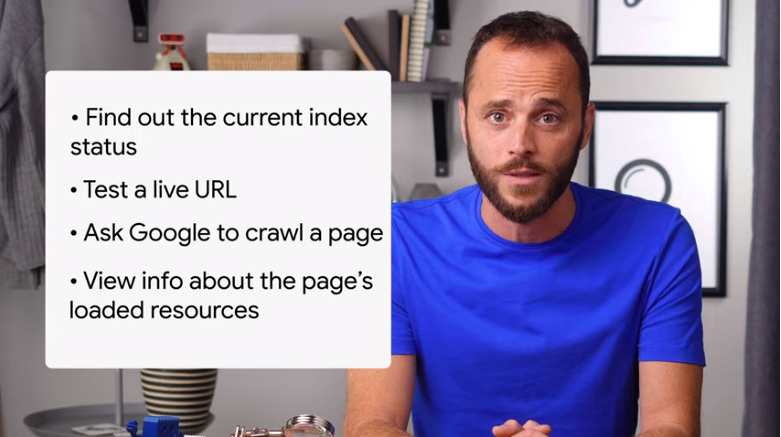Verifying pages with the Search Console URL inspection tool
All of the guides to the webmaster tools included in Google Search Console lead us today in deepening the topic of how to use the Url Inspection Tool, that allows to discover the page status in the Google Index, perform live tests, ask to the search engine to scan a specific page and so much more.
Guide to the use of the Url Inspection Tool
Our companion and guide in the discovery of this tool is, as always, Daniel Waisberg with the series Google Search Console Training on YouTube, now at its fifth episode: right after the coverage of general topics such as the verification of site ownership and others more technical like the Performance Report, the Search Advocate now offers us some practical advice on the URL Inspection tool that, as previously mentioned, is very useful to acquire info on the version of a specific page indexed by Google and, in particular, on AMP errors or structured data and indexing issues.
To understand why the page does not appear on Research
According to the Googler, this is one of the “most important debugging tools to help you understand why your page might not be appearing the way you expect in search results”. In order to read the detailed info of the Google Index correlated to a URL within our property all it takes is to launch the tool through one of the methods available – the top bar in the navigational menu, the side navigational box or the magnifying glass next to each Url in the other Search Console sections – and immediately find out the current indexing status of the monitored resource.
To get results, we need to enter the complete Url of the page and to always keep in mind that:
- The tool only works with Web pages and only show results for Web research.
- The URL must be inside the current property for it to be tested.
- It is possible to check both the AMP URLs and the non-AMP version of the page.
- If the page owns any alternative or duplicated version, the report also provides info on the canonical Url, if included within one of your properties.
Deepening info relative to the pagina
Three sections will open up at this point, presenting information relative to the last Google scan or to the last registered crawling attempt – it is not a real-time test, then, but it rather describe the most recent indexed version of a page, not the one published on the Web.
Checking presence on Google
In the Presence area on Google we discover if the URL appears or not among Google Research results through five possible values:
- The URL is on Google, and then there are no issues at all.
- The URL is on Google, but has some problems. The page is indexed and appears among search results, but there might be some critical issues with structured data or other elements like AMP.
- The URL is not on Google: indexing errors. On the page there is at least one critical error that blocked the indexing.
- L’URL is not on Google. The page does not appear, generally as deliberately blocked with a password, a noindex instruction or alternative version of a canonical page.
- The URL is unknown to Google. Google did not index the page because it never detected it in the past or it appears to be an alternative page correctly marked, but that it was not possible to actually scan.
Verify Index coverage
In the coverage section we can verify the Url’s indexing status and some further details about the indexing procedure. For instance, the known sitemaps leading back to the Urls or referral pages that linked it, but also the time of the last scan performed by Google and from which user agent, the general status code and canonicalization status.
Finding out possible enhancements
Lastly, the Enhancements area reports possible optimization interventions identified by Google regarding the URL during last indexing. Here there are indications on the usability from mobile devices, on the connected AMP versions and on the structured data used, along with the marking of possible errors with each of those elements.
Furter optimization interventions and live test
once obtained these info on page status, we have three specific actions to put into practice: firs of all, we can check a URL published with a real-time test so to see if the page can be indexed and if the edits worked on it solved the problems or not, in order to confirm if Googlebot is allowed (or not) to access the page for indexing.
It is also possible to request a new indexing, if we did any change (sometimes also waiting several weeks for the operation to be completed) and, in the end, we can display the rendered page to gain more info, to find out how Googlebot actually sees it and gain info on HTTP status and on loaded resources.


